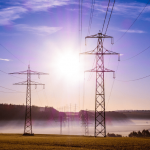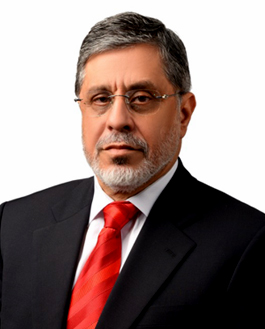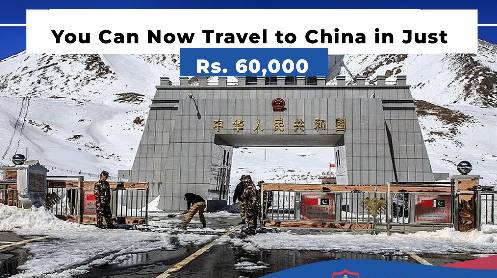ISLAMABAD: Independent Power Producers (IPPs) have done postmortem of the report of nine-member committee headed by ex-SECP chairman Muhammad Ali on power sector declaring its recommendations as against the spirit of power policies that the governments offered and the power purchase agreements (PPAs). The IPPs also termed many of the recommendations as ones suggesting putting cart before the horse.
The IPPs also highlighted glaring mistakes in the calculations of excessive profits and return in the report, saying that in a number of cases, the stated accounts in the report do not reconcile with accounts reported in IPP’s records, financial statements. They also questioned the ability of the members of committee saying returns (profits) are not analyzed against contracted returns but stated in absolute terms, which is meaningless.
All the private power houses under the platform of IPPs Advisory Council (IPPAs) have sent their consolidated response to Federal Energy Minister Omar Ayub Khan, Secretary Power Irfan Ali, Special Assistant to Prime Minister on Coordination of Marketing & Development of Natural Resources Shahzad Syed Qasim and other important players in the government. The copy of the detailed response by IPPs is also available with The News.
One of the IPPAs officials when contacted said that since the government has not formally provided the report to IPPs, it is available to every Tom, Dick and Harry, so they also managed it and gave its point-to-point response and when the report is formally available to them, they would formally give their response.
The IPPs in their response (rebuttal) also built the case against the government holding it responsible for surge in power tariff saying that taxation, duties and surcharges, and higher transportation and distribution losses are causing 40 percent increase in the tariff.
However, in response to four interventions suggested in the report basically to slice down the excess profits and reduce power tariffs for the benefit of consumers and the economy, the IPPs said that switching from US$ to PKR return cannot be done mid-term and it could only be applied in the future power policy to be announced by the government arguing that the return should be same for local and foreign investors. The detailed rejoinder of the IPPs also mentioned that the report does not address the major issue of foreign debt (70-80pc of project cost), which was a policy decision by the government to make it mandatory to bring 50pc of foreign currency requirement from outside Pakistan for all projects under 2013/2015 policy.
The IPPs have also shared their mind saying it is not possible to shift the tariff regime to take and pay structure without first having competitive marketplace for buying and selling electricity like any other commodity, which is liquid and financially secure. The rebuttal of IPPs also pinpointed the fact that the legitimate returns of Hubco and other IPPs set up under the 1994 Policy have already been squeezed earlier, resulting in some projects becoming financially nonviable and ultimately shutting down while certain others are only marginally profitable with IRRs (internal rate of returns) far below the rates guaranteed under the Power Policy.
To one of the findings of the report that under the 1994 Power Policy, 16 out 17 IPPs invested just Rs51.80 billion but in return they so far earned excess profit of Rs415 billion, having taken out dividends in excess of Rs310 billion, the response of IPPs while questioning the ability of the members of the committee said returns (profits) are not analyzed against contracted returns but stated in absolute terms, which is meaningless.
The private power houses also flagged the competence of the members in the committee as red saying more importantly the government committee, while calculating the returns, also ignored the most important factor of ‘Time Value of Money’ and ‘Dollar Indexation’ giving the example of investment in a 12pc Defence Saving Certificate, which increases 3.5 times in 10 years and similarly, increase in gold prices have resulted in a profit 18 times of the amount invested 20 years ago.
The IPPs also highlighted the fact that in a number of cases, the stated accounts in the report do not reconcile with accounts reported in IPP’s records, financial statements. They also said that IPPs under the power policy 2002 have been wrongly projected in the report that they have made profit of Rs203 billion, as factually their profit stands at Rs152 billion. They also contested the exaggerated amount of profit of Rs415 billion made by the IPPs under power policy 1994 saying profit is much lower, which will be worked out later on by IPPs.
The government committee highlighted the excess set-up cost of Rs32.46 billion that was allowed to the two coal-based plants due to misrepresentation by sponsors regarding Interest During Construction (IDC) as well as non-consideration of earlier completion of plants by NEPRA. As per the report, these plants were completed within 27-29 months, however IDC (interest during construction) was allowed for 48 months. As a result, the report says, one of the plants, Sahiwal Coal Power Plant, will be getting excess payment of Rs291.04 billon in 30 years. The IPPs responded saying that the coal plants are set up on upfront tariffs. And the issue negates the very purpose of upfront tariff as any gain or loss is to the account of sponsors. They also argued that Required Commercial Operation Date (RCOD) were very tight. Due to delay in financial close, the sponsors injected shareholder loans to fund the project construction in the interim to ensure RCOD is met. The cost of such shareholder loan is not reflected in the actual IDC.
About the suggestion of the report on switching Take or Pay provisions in PPAs to Take and Pay, the report argued this will save Rs28 billion per annum to the country. The report also termed that Take or Pay provisions in PPAs are major contributors to high cost of electricity and with 30% excess capacity in the system and Rs 900 billion expected as capacity payments next year. The IPPs in their response said that had it been open market operations and assuming plants could sell at levels on plant factor, then fixed costs would be grossed at this utilization factor. IPPs also said that Take and Pay mode would result in savings of Rs28 billion annually is fundamentally flawed. This applies to Return on Equity as well. If investors were to recover their returns in first 10 years instead of 25-30 years, the rate of return would have been much higher than 15pc and regardless of contractual protections, in a single buyer market, shift cannot be made to Take and Pay basis and then develop an open market.
On the issue of excess payments, on account of fuel, heat rate and O&M, IPPs responded saying that tariff initially determined at feasibility by NEPRA is trued-up based on actual costs at Commercial Operation Date (COD) which is fixed for the entire PPA term and no true up is allowed post COD. Both Heat Rate and O&M are fixed for the entire PPA term of 25 years. The actual rates are better than tariff benchmarks in earlier years and worse in the later years, however, tariff does not recognize such change in performance and provides a uniform tariff for the entire PPA term. Certain older plants have lower heat rates and higher O&M expenditure compared to tariff and they bear the loss by taking hit on their returns. Similarly, PPA does not provide for a claw-back mechanism for better performance and neither it provides any compensation to IPPs for lower performance against the approved benchmark and any gains/(losses) are also to the account of the IPP. And if the government seeks to actualize heat rate and O&M, it should be on both sides, i.e. plants with heat rates and O&M costs higher than PPA benchmark should be compensated for the loss. IPPs also mentioned that many older government plants are now only 20pc efficient compared to their original efficiency of 36pc-38pc, whereas IPPs with better management and rigorous maintenance regime are maintaining and exceeding their design efficiencies.





